Image of the Day Archives

For older Image of the Day pictures, please visit the Image of the Day archives. Pictured: NGC 2467.
Storm of Light
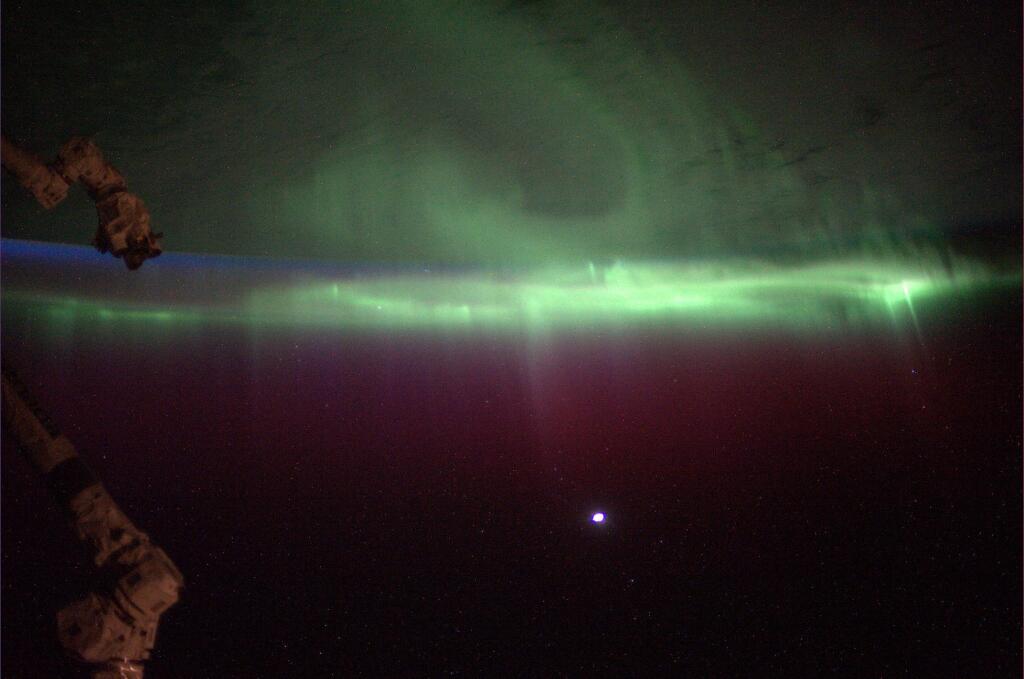
Monday, March 3, 2014: On Feb. 23, 2014, Dr. Koichi Wakata tweeted this image of the aurora australis taken aboard the International Space Station (ISS). In another tweet about watching the phenomenon, he wrote: “It looked like a storm of light.” Portions of the space station’s equipment appear at left, while a few stars peek out of the inky blackness of space at bottom. Wakata represents the Japan Aerospace Exploration Agency (JAXA) as a Flight Engineer on International Space Station (ISS) Expedition 38 and the Commander of Expedition 39. [See our gallery of Expedition 37/38 images.]
— Tom Chao
Auroras Come to Sunny Prestatyn
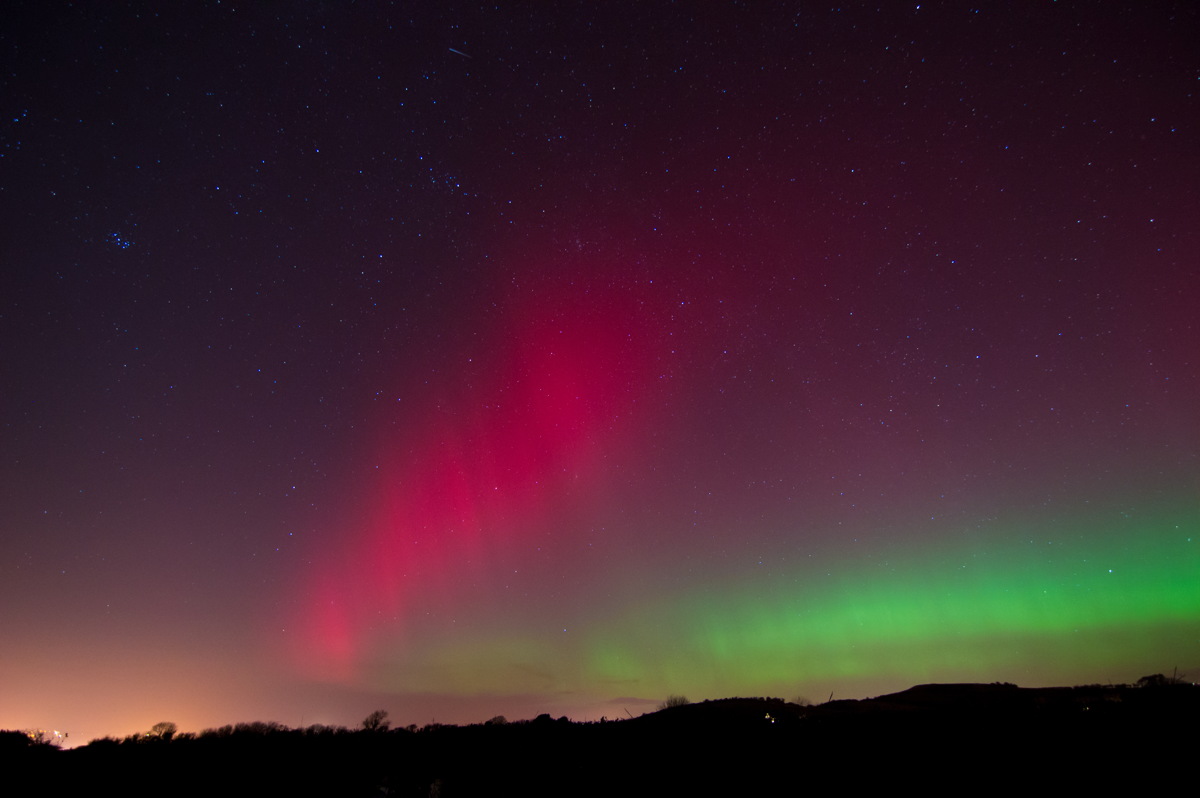
Tuesday, March 4, 2014: Astrophotographer Garry Owens sent in a photo of the recent brilliant auroral display seen in the United Kingdom. The auroral activity stemmed from sunspot AR1967 erupting, producing the strongest solar flare of 2014 whic produced auroras at lower latitudes than usual in the northern hemisphere. Owens took the shot on Feb. 27, 2014, in Prestatyn, Wales, UK. [See our video about the recent violent solar flare.]
— Tom Chao
Wheel in the Sky Keeps on Turnin'
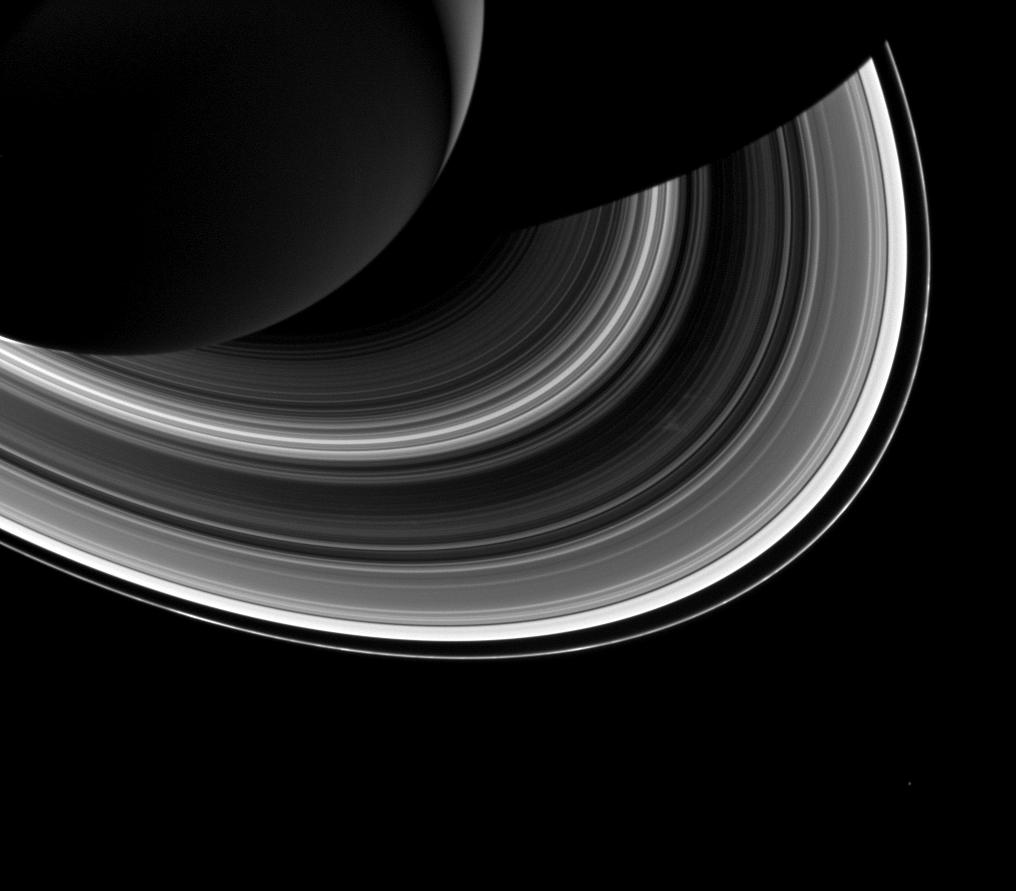
Wednesday, March 5, 2014: Saturn’s moon, Mimas, appearing as a tiny speck at lower right, orbits the planet, while a set of spokes appear in the B ring (just right of center). Scientists do not fully understand the mysterious spokes, but researchers believe the spokes will no longer appear when the sun moves higher in Saturn’s sky, as it approaches northern equinox. This occurrence may relate to the ability of micron-sized ring grains to maintain an electrical charge and levitate above the rings, forming the spokes. Therefore Cassini spacecraft may not see any more spokes in the future. The spacecraft took this image in visible light on Oct. 22, 2013, at a distance of approximately 1.6 million miles (2.6 million kilometers) from Saturn.
— Tom Chao
GREECE-d Lightning
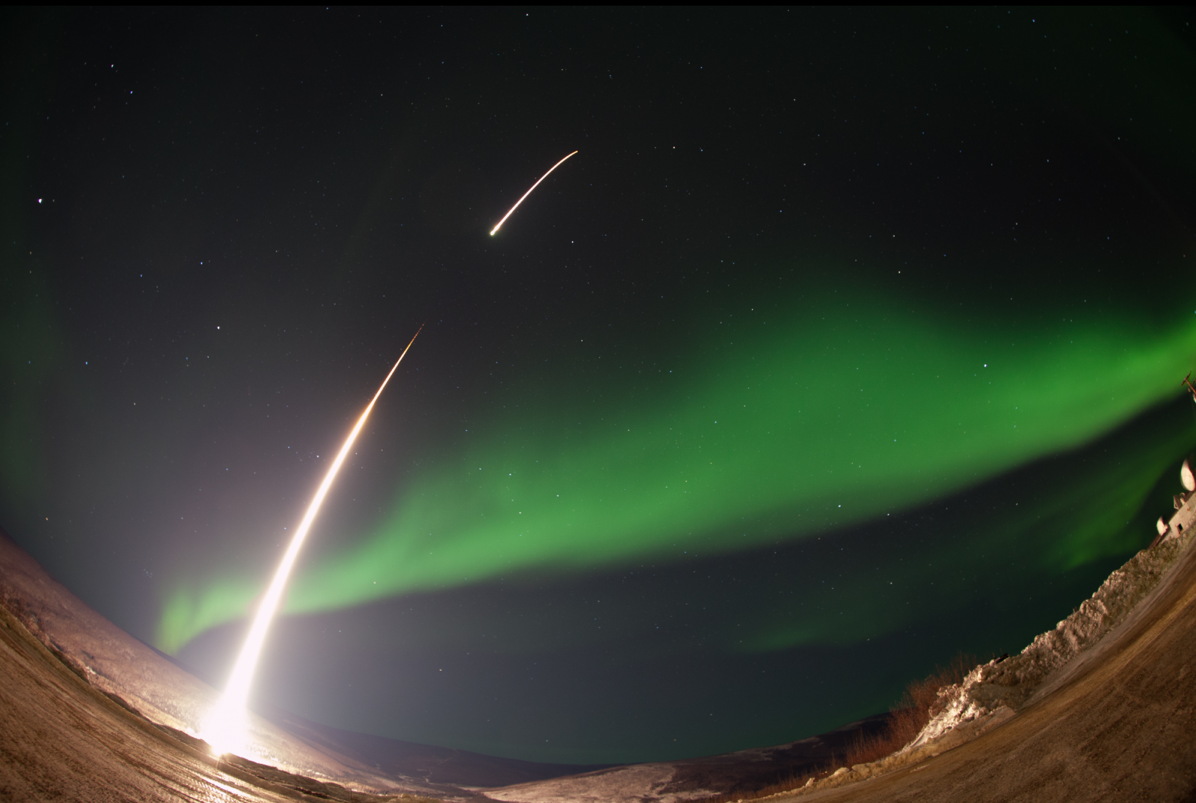
Thursday, March 6, 2014: A NASA-funded sounding rocket flew into an aurora over Venetie, Alaska, on March 3, 2014, as seen in this dramatic image. The sounding rocket mission, known as Ground-to-Rocket Electrodynamics – Electron Correlative Experiment (GREECE), launched from Poker Flat Research Range in Poker Flat, Alaska. The mission intends to study classic “curls” in the nighttime aurora. GREECE mission seeks to understand what combination of events sets up these auroral curls in the plasma (charged heated gas) where auroras form. This information can help explain details of the sun-Earth connection and how energy and particles from the sun interact with Earth's magnetic system, the magnetosphere.
— Tom Chao
The Lights in the Sky Have Finally Arrived
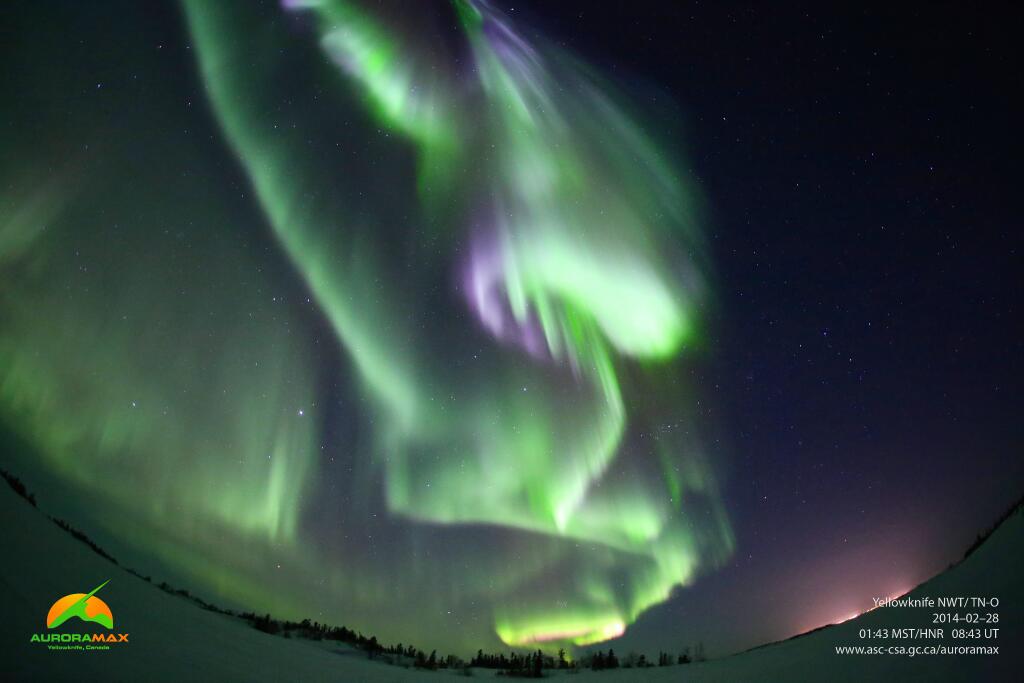
Friday, March 7, 2014: Canada's automated aurora camera tweeted this photo, writing: "AURORAMAX GALLERY • Latest #photo of #aurora borealis above #Yellowknife NWT taken at 01:43 MST on Feb 28, 2014. pic.twitter.com/GVTFapc7al.” [For more photos of auroras, please see Northern Lights: Amazing Aurora Photos of 2013.]
— Tom Chao
Shadowy Planet
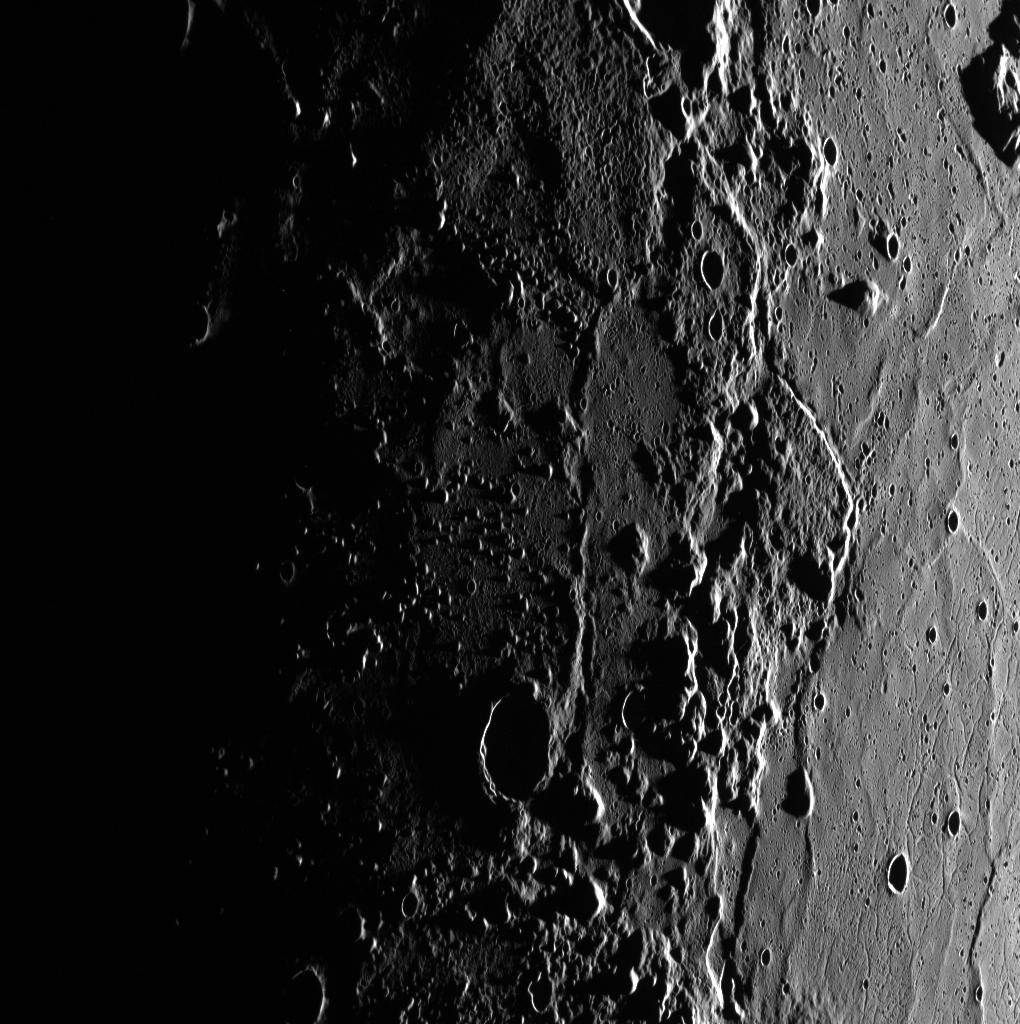
Monday, March 10, 2014: Mercury’s uneven surface comes into sharp relief when the sun sits low on the planet’s eastern horizon. The relatively smooth floor of the Caloris basin lies on the right, with the rim and exterior of the basin to the left. The knobby texture outside of the basin may have arisen due to blocks of material ejected by the basin-forming impact. MESSENGER spacecraft acquired this image as part of the Mercury Dual Imaging System's high-incidence-angle base map. High incidence angles, obtained when the sun sits near the horizon, create long shadows that accentuate the small-scale topography of geologic features, as seen here.
— Tom Chao
Get the Space.com Newsletter
Breaking space news, the latest updates on rocket launches, skywatching events and more!
Calling Butterfly
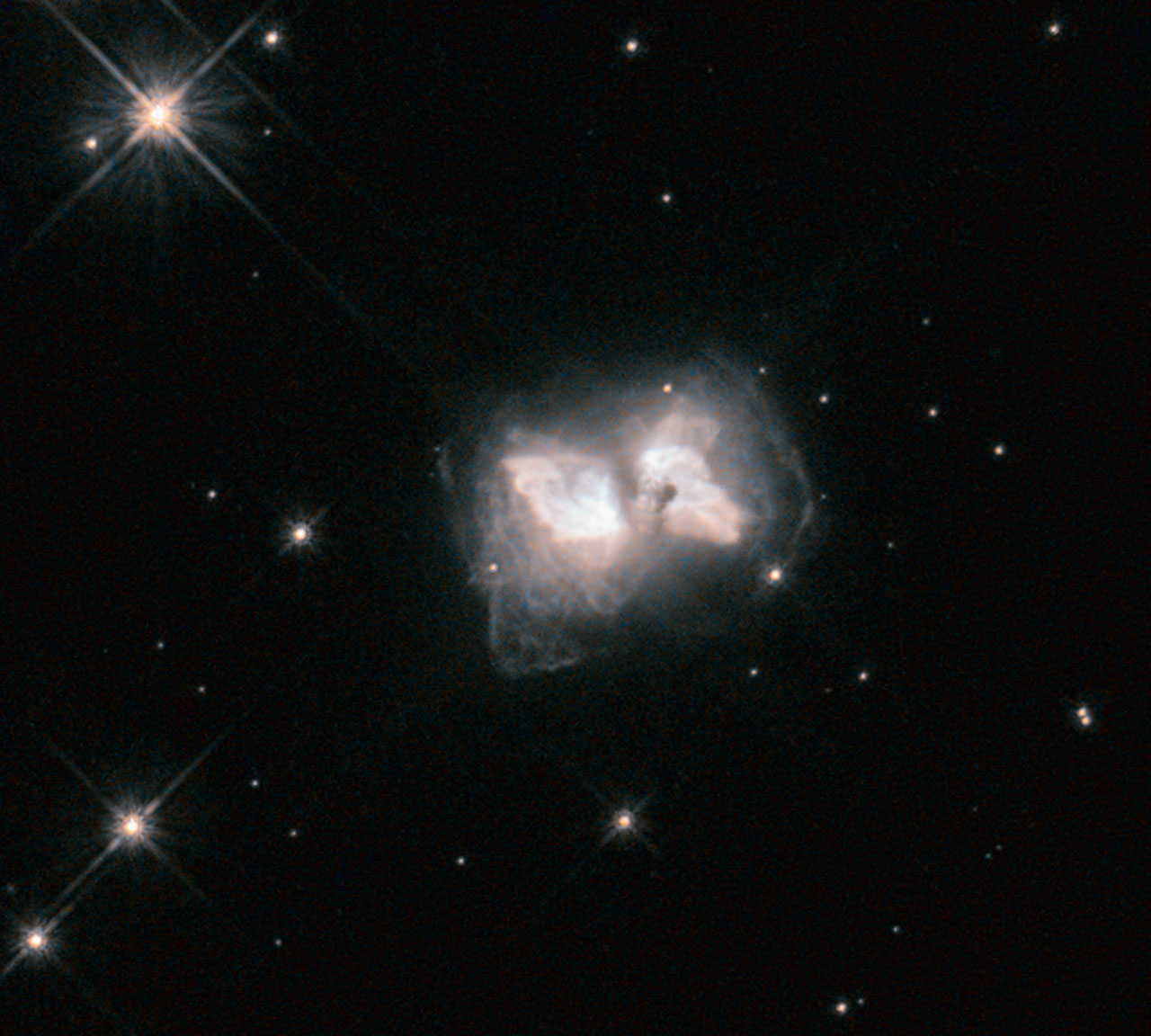
Tuesday, March 11, 2014: A nebula known as AFGL 4104, or Roberts 22, appears like a cosmic butterfly. A star nearing the end of its life has flung off its outer layers, causing the nebula to emerge in this striking form. The lobes of Roberts 22 show a complex structure, with countless intersecting loops and filaments. The object currently exists as a preplanetary nebula, a short-lived phase that begins when a dying star has expelled much of the material in its outer layers into space, ending as the stellar remnant heats up enough to ionize surrounding gas clouds, causing them to glow. About 400 years ago, the star at the center of Roberts 22 lost its outer shells, which blasted outwards to form this butterfly. Soon, the central star will be hot enough to ionize the surrounding gas, thus evolving into a full planetary nebula.
— Tom Chao
Looper
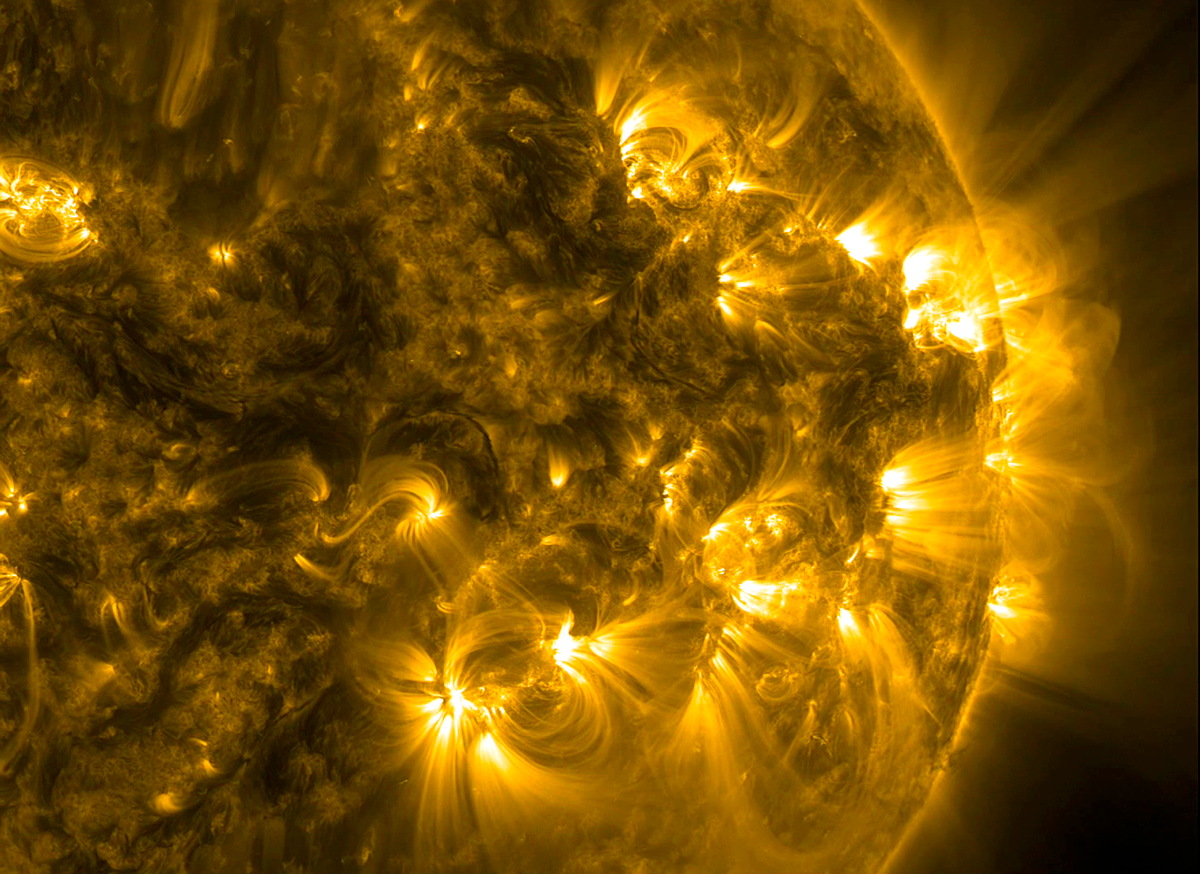
Wednesday, March 12, 2014: A large group of active regions on the sun produced many different magnetic loops floating over them in a period of a little more than two days, March 4-6, 2014. The orbiting Solar Dynamics Observatory shows the loops in extreme ultraviolet light, as they consist of charged particles spiraling along magnetic field lines. This image comes from a video.
— Tom Chao
44% of the Moon
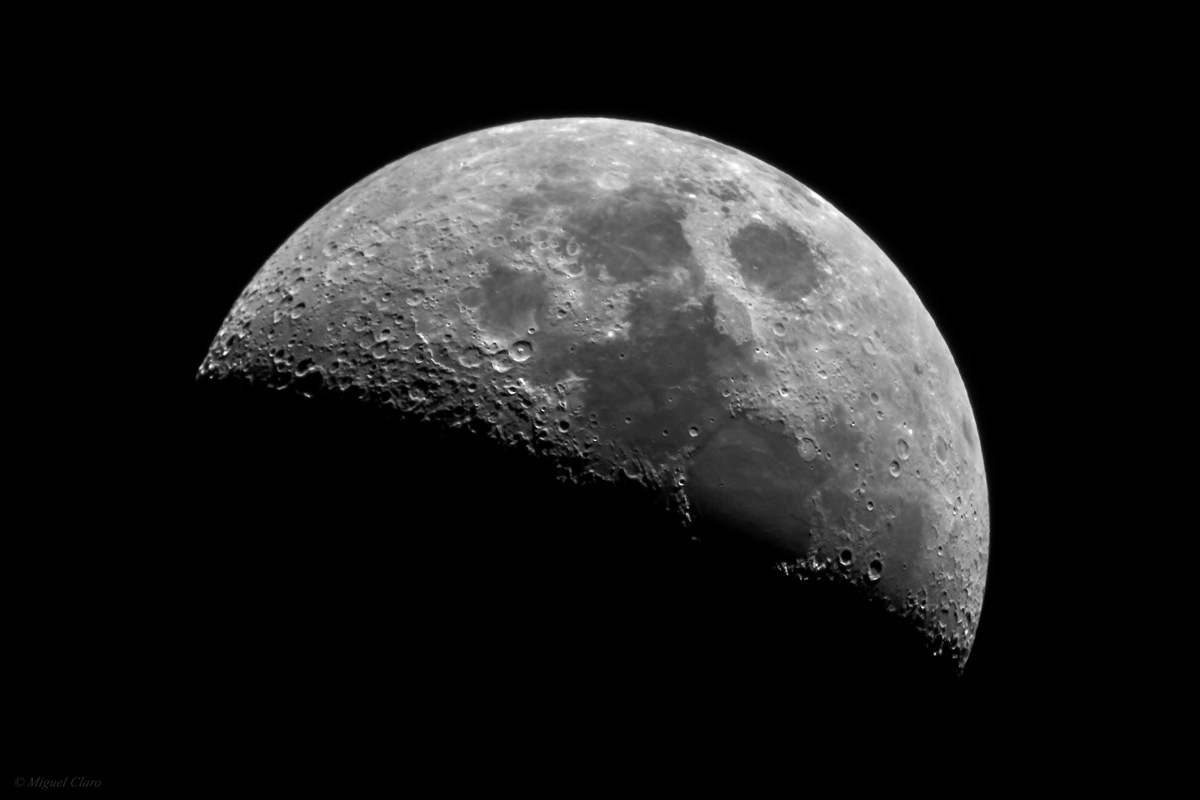
Thursday, March 13, 2014: Astrophotographer Miguel Claro captured the first quarter moon on March 7, 2014, one day before first quarter phase. The sun illuminated 44% of the moon’s disk at that point, and the moon floated at a distance of about 246,000 miles (396,000 km) from Earth. Craters stand out dramatically on the moon’s surface owing to the angle of the sun’s rays. At center lies the vast lunar mare, Mare Serenitatis, with the well-known Mare Tranquillitatis to the lower-right. Claro is based in Lisbon, Portugal. [See more reader skywatching photos.]
— Tom Chao
If You're Fond of Sand Dunes
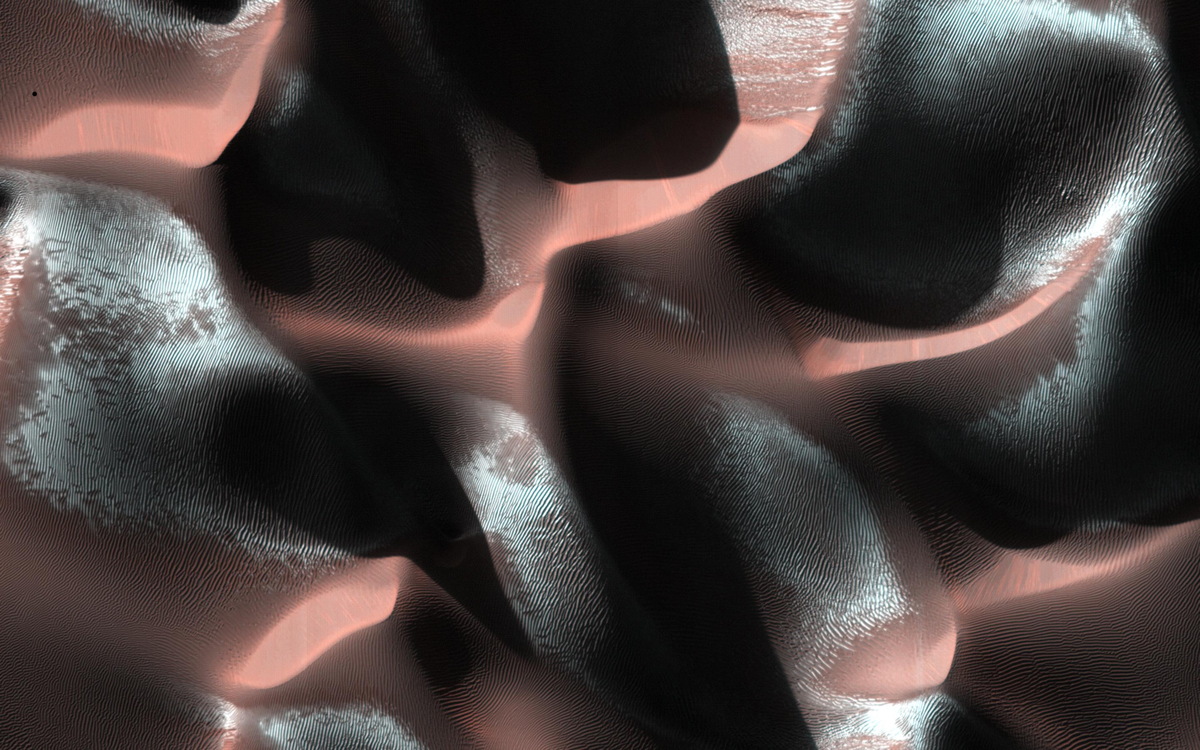
Friday, March 14, 2014: Mars Reconnaissance Orbiter spacecraft shows a sand dune field in a Southern highlands crater on the red planet. The sun lay only 5 degrees above the horizon when the spacecraft captured this image, producing deep shadows, with dune crests sticking up sharply into the sunlight. The bright patches which appear bluish in enhanced color arise from seasonal frost accumulating as this hemisphere approaches winter. Image released March 12, 2014.
— Tom Chao
Join our Space Forums to keep talking space on the latest missions, night sky and more! And if you have a news tip, correction or comment, let us know at: community@space.com.










